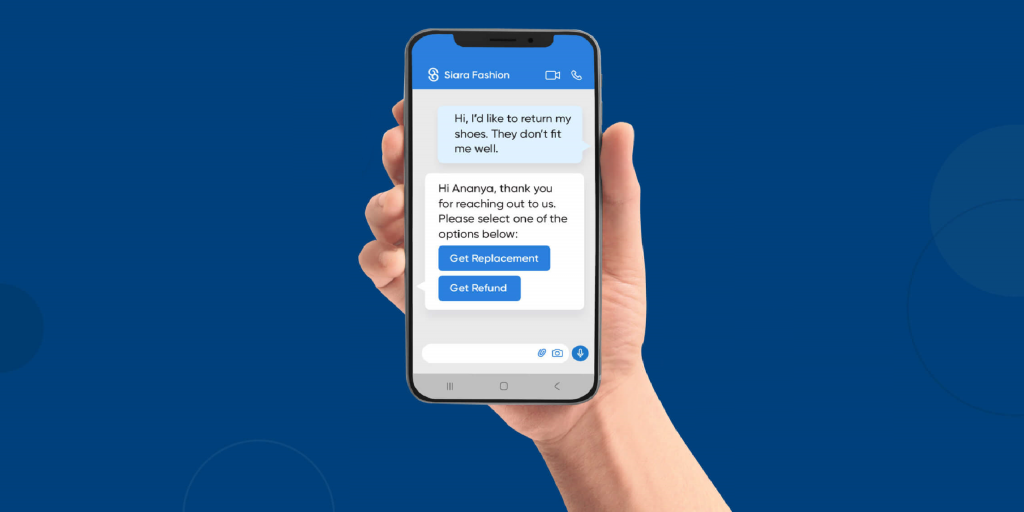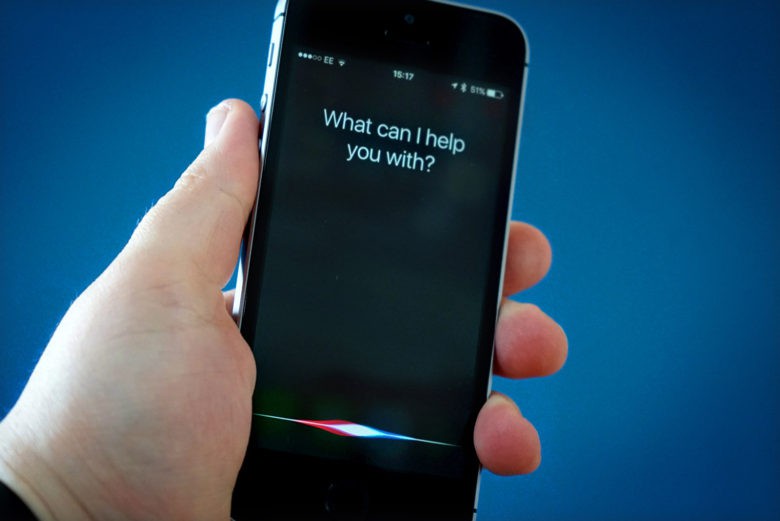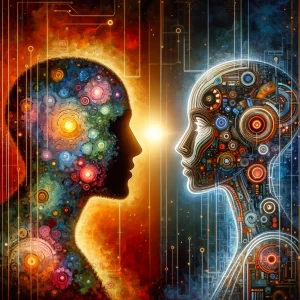An exciting technology
Everything we say or write contains a huge amount of information, information that can be extracted and processed for our benefit. Natural Language Processing (NLP) combines parts of the linguistics, computer science, and artificial intelligence fields to allow computers to understand texts and spoken words in almost the same way human beings can. As the technology becomes more advanced, it can be deployed in more ways, in this article 8 different applications of how NLP will benefit our society are discussed.
NLP to serve our needs
24/7 Service

In a poll by Venturebeat 51% of the people said they expect a business to be available 24/7. And that is not an odd percentage, in a 24/7 society where we can work, order, exercise and eat at any time of the day and where ever we want, it can be expected that we also want answers and help at any time of the day and preferably in an instant. We all know how bad the waiting times for support can be and it remains an unresolved issue, but chatbots are the closest solution to this date. These chatbots have a few good qualities, to name a few: they can give answers to simple questions, give instant and consistent answers, can support multiple languages and, of course, are always online. For businesses a chatbot can also be a good investment, for example, it can save costs for customer service, communicate with multiple customers at the same time and by giving the customers the right recommendations, it can increase sales.
Although most of the users report a positive interaction with these chatbots, concerns were also expressed. Most of these concerns were about reduced accuracy of the given answer, non-human sounding unnatural flow of the conversation and lack of understanding of the issue. While these issues are of course grounded, research is still being done and improvements are made. It is expected that in a year 90% of the customer interactions will be handled correctly, this will increase the benefits for customers as well as businesses even further.
Virtual Assistants
While chatbots offer 24/7 service, virtual assistants offer that same benefit. Chatbots and virtual assistants share more properties but the main difference is that while chatbots can only answer questions for which it is specifically designed, virtual assistants can perform all sorts of tasks and give answers to a variety of questions. These questions and tasks may include asking how the weather is, when the next meeting is or reading texts out loud and answering them. Some of the most popular virtual assistants include: Siri, Google Assistant, Alexa and Cortana and they can be found on phones, in cars or around your house. The main benefits of using virtual assistant technology are centered mostly around the ease of accessibility, it doesn’t require touch but it can work with speech. This makes it extremely convenient for multitasking for example during driving or cooking.

A survey held by Adobe seems to support this, in that survey people answered that they use these assistants for general tasks namely: 1. Directions while driving (52%), 2. Making a phone call (51%), 3. Sending a text (50%) and are willing to use it for more complex tasks when the technology advances. They also seem happy with the virtual assistants, 92% of the interviewed people said they agree with the statement “Voice technology saves me time” and 79% agreed with “Voice technology improves and contributes to my quality of life”. The participants were also asked what issues they had with voice technologies, and the three main issues that people had were: The accuracy of voice recognition (83%) followed by privacy concerns (81%) and lastly user experience challenges (71%). These issues are not that surprising but still important, while companies are still improving their assistants to handle questions even better, it remains critical that they are transparent about the data they use and collect.
Collecting data
Chatbots and virtual assistants are great at answering the user’s questions, that is because they are trained on previous data about the users and their questions, and in order to keep improving these chatbots and assistants new data is required. However, not any data will do. In the case of chatbots, many organizations have plenty of data in the form of answers that they want to provide within the bot, but lack the most important piece of data: examples of how users ask these questions. Of course, in the case of virtual assistants, example questions may also be lacking, but the answers to these questions are more difficult to get since these may include destinations, playing music, traffic and providing news updates.
To make sure that users will get correct answers to their questions and to increase customer satisfaction, companies can collect data from a range of sources. One of them being previous real interactions between itself and the user. This way, it can learn how users normally ask questions and what their intent is. But NLP, the underlying technique, can also be used to formulate new answers. Using NLP, data from the internet about a particular subject can be scraped and processed to formulate a whole new answer specifically tailored to answer the user’s question.
But NLP isn’t limited to only chatbots and virtual assistants for data collection. The text analysis can also be used to gain precious insights in e.g. market trends and customer satisfaction on a large scale. These texts can come from a wide variety of sources. For example, internal systems, social media, emails and online reviews. It can then process these texts in a fraction of a time than if it were done manually.
Saving time and costs
Natural Language Processing can take on many different tasks from different fields such as translation, legal, customer service and data collection. And for many different reasons, this is a good idea, one of them being saving precious resources such as time and money. According to Forbes 84% of small businesses still require some form of manual data entering every day, but with the current technology, it isn’t unimaginable that this number can be reduced drastically. Some examples of how NLP techniques could aid workers or even replace the need for manual labor at all were given, such as, providing customer service through chatbots and gaining (business) insights by performing text analysis. This shift where NLP techniques replace workers or help them in their work can cause labor costs to go down and efficiency to go up.
But there is no need to worry that jobs will be permanently lost. Research by the World Economic Forum shows that the recent technological advancement won’t cause millions of people to become unemployed. They calculated that although this ‘revolution’ causes 85 million jobs to be displaced, 97 million new jobs will be created.
NLP to improve human commiunication
Aiding people with disabilities

Mentioning ‘OK Google’ to add something to your calendar, or asking ‘Alexa’ to send a message to a relative is something most people tend to use occasionally when they don’t wish to input any command themselves. However, for those people who have trouble with or are simply incapable of handling smart devices directly, having voice input backed by NLP technology can make all the difference. For instance, a digital assistant, capable of dialling a restaurant, booking tickets, making purchases or simply setting a reminder, can be a huge improvement to the quality of life. Also, since more than 4 billion people worldwide use not only the internet but also social media platforms, NLP-backed technology can help people with physical disabilities remain socially active online, which is especially relevant today during the pandemic. Another application of NLP concerning this matter is speech recognition specifically designed to cater towards individuals with impaired speech, like how Google’s project Euphonia partnered up with ALS organisations to try and build NLP algorithms tailored for people suffering from ALS. Furthermore, companies like Microsoft have also been working on such applications, where for instance deaf students can utilize advanced NLP speech recognition to translate their lecturer’s classes and notes to text, so these students don’t need to miss out on any information during their studies. However, despite all these positive applications of NLP, studies have shown that NLP models may possess undesirable biases towards mentions of disabilities, Where such models may associate having a disability with negative traits such as drug addiction and homelessness. Although some effort is needed to disassociate such biases from the models to promote inclusivity, it is clear that people with disabilities have a lot to gain from NLP technology.
Language translation

Staying on the topic of human communication, NLP-backed translation models have become of mainstream use to most internet users. Whether it be translating webpages during browsing, adding automatically generated subtitles on video sites, or requesting the exact translation of an old Chinese proverb, the technology knows many uses. Similar applications of the technology can be found in grammar checks and auto-suggestions, present on almost all smart devices. As advancements in the field continue to be made, envisioning a future without the need for people to learn a language to effectively -possibly even naturally- communicate is no longer within the realm of science fiction. What forms such technology will take remains speculation for now, but devices that use speech recognition and translation in such a way can already be found on the market today. Another slightly more abstract form of translation is sentiment analysis, Where human speech or writing, often gained in social or linguistics studies from sites like Twitter and Reddit or comments on social media sites, is analysed to extract the sentiment from the text. Applications of this can not only be found in scientific studies, like this one identifying hate speech and racial bias in social media, but also in analysing feedback on services, or even extracting information on market sentiment to predict the onset of an economic crash. Coming back to live translation, it can be argued that this is one of the most exciting aspects to look forward to. From being able to go on vacation and navigate effortlessly, to foreign ministers meeting without the need of translators, who knows what the future could look like when the technology becomes seamlessly integrated into our communication.
Text-to-code translation (CAC)
Moving from translating between languages to bridging the gap between words and code, Computer-Assisted Coding (CAC) is a new technology that enables users to generate software code from simple text inputs. Such a feat has already been demonstrated numerous times recently, for instance by Microsoft and OpenAI, here and here, respectively. These demo’s, though showing the technology in its foetal form, give a glimpse of what may come in the future when the features will improve. The idea of anyone eventually being able to compile software, apps, and websites without taking a programming course is very appealing. Of course, some questions of concern may be in place. For instance, though ultimately a superficial example, software programmers may fear losing their jobs or have their future careers be in jeopardy. To be fair, code generation without actual programming is already widely in use, like WordPress for websites and Google’s AutoML for data science, already exists. However, CAC does not take into account whether the solutions generated are correct, and function exactly the way the user intended them to. For very simple tasks this may not be an issue, as long as it is functional, but large-scale projects will inevitably require engineers who can solve issues on the backend. In such circumstances, CAC may be able to assist the project and its engineers, but will not suffice on its own in generating all the required code, for now. There is also the issue of cost. OpenAI’s GPT-3 is mentioned several times in this article, being the current state of the art NLP model. This model cost 12 million dollars to train, and using it for programming purposes may cost potential businesses more than simply hiring a trained developer. However, as such models may become more efficient in the future, and our hardware and processing capabilities more powerful, these costs may be reduced enough for us to be able to say; ‘Anyone can make an app’.
Digital lawyer
Whilst generating code from the text might be useful to a somewhat niche market, another more practical application of NLP technology might be seen in the legal system. Currently, digital technology is mainly used in forensics during a court case, aside from some instances where AI may be used for summarizing documents or perhaps deciding in parole grants. Another possibility that might seem a little too futuristic for some readers is the use of NLP in assisting, or possibly replacing, lawyers. Although bad news for the lawyers of the future, AI can provide a cheap and always-available legal defence. NLP specifically has already been demonstrated to be able to convert mundane sentences into lawyer-Esque defence statements, as an example from the GPT-3 model shows when receiving a plain statement:
“My apartment had mould and it made me sick.”
and turning it into a legal statement:
“Plaintiff’s dwelling was infested with toxic and allergenic mould spores, and Plaintiff was rendered physically incapable of pursuing his or her customary vocation, occupation, and/or recreation.”
This is very impressive, and will surely worry some lawyers up-to-date with current NLP technology. Another example given by the same source shows the opposite is also possible, where difficult legal terms and sentence structures are broken down by the model into readable, plain English texts. Some sources like this one are already talking about GPT-3’s abilities as though the model signals the end times for lawyers and attorneys, mentioning the possibility of a fully AI-governed legal system in the hopes of removing any human biases. However, a case can be made against this idea. For one, we have to define our motives clearly when using such models. If their aim is to ‘win’ the court battle, they might resort to legal loopholes or ‘dirty’ tactics just to see someone behind bars or walk free. It may be the best idea, for now, to make their aim as follows: ‘Find out if X is against/within the law’.
In summary
Natural Language Processing is an exciting technology, with many different potential applications. It has the potential to help many businesses, customers and users in everyday life to help save time and money, streamline and automate processes and make real-time data-driven decisions.


